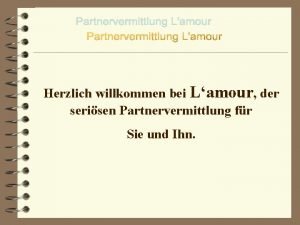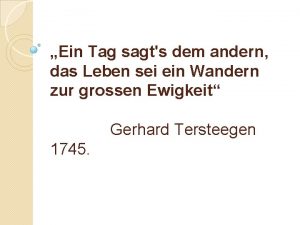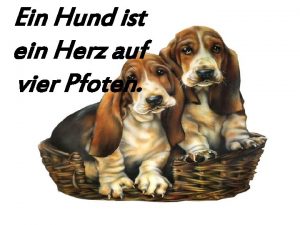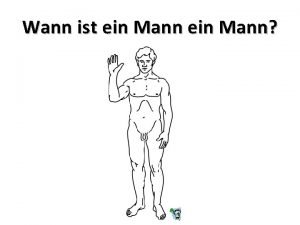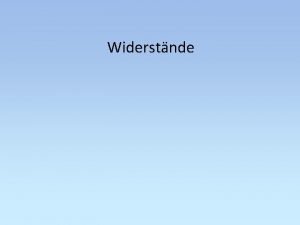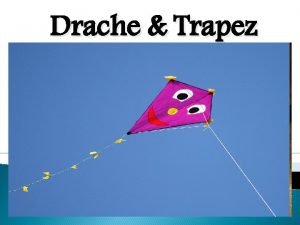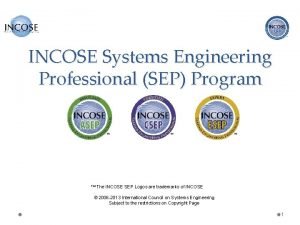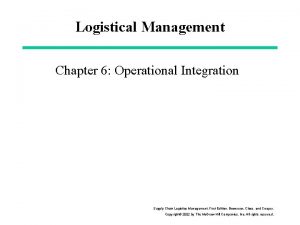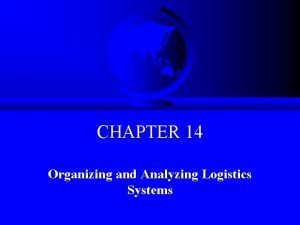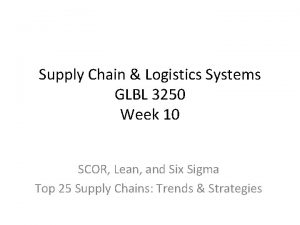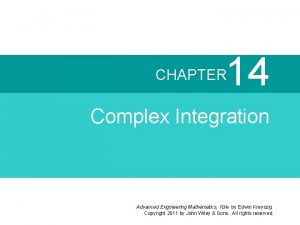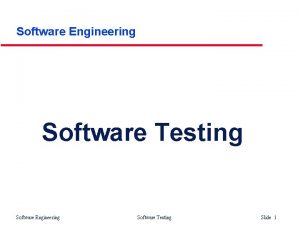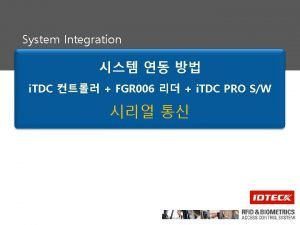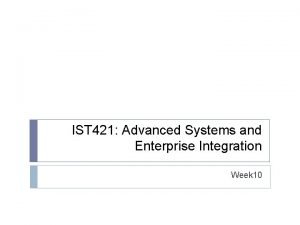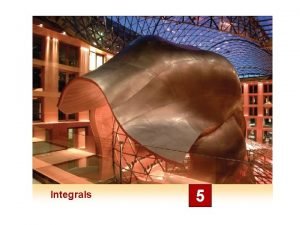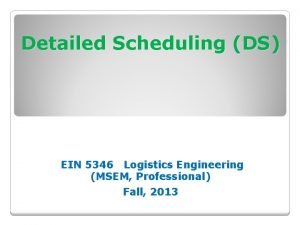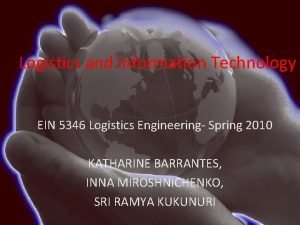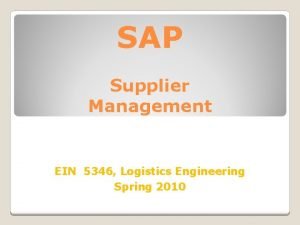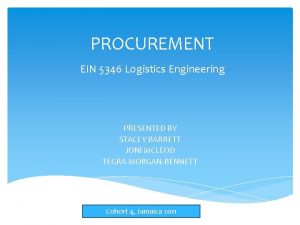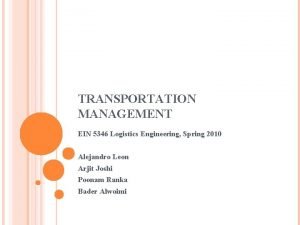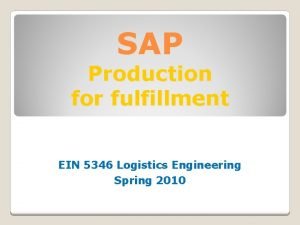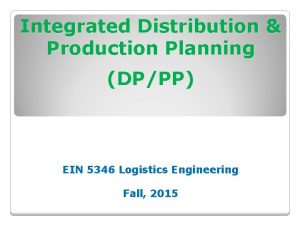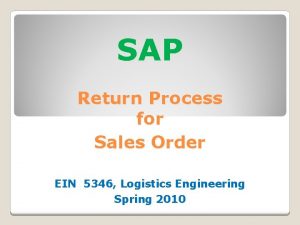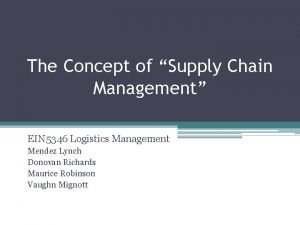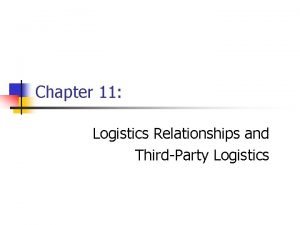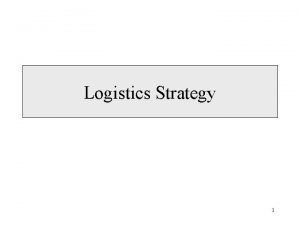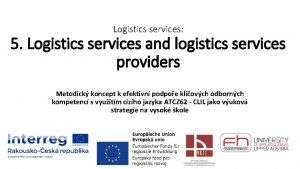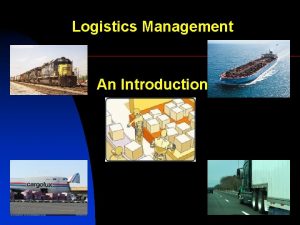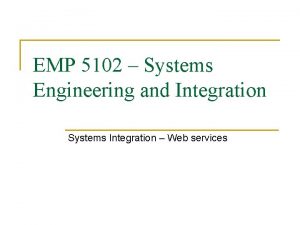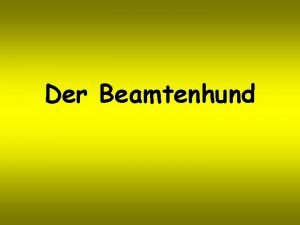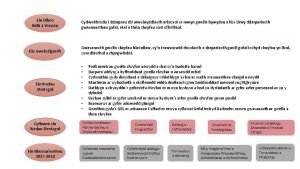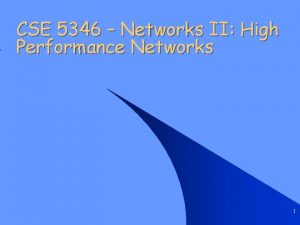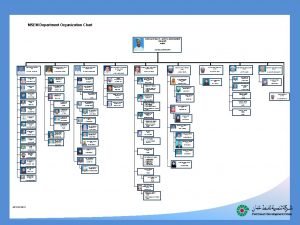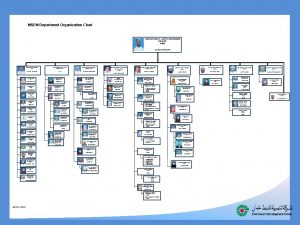Systems Integration EIN 5346 Logistics Engineering MSEM Professional


































- Slides: 34

Systems Integration EIN 5346 Logistics Engineering (MSEM, Professional) Fall, 2013

ERP & APO Integration Theories & Concepts

Outline of ERP & APO Integration 1. Core interface (CIF) • CIF Overview • CIF Configuration 2. Integration models for data transfer • Object and data transfer • Initial and delta transfer 3. Master data integration 4. Transactional data integration

Integration of ERP & APO via CIF (Review) 7. 0 Alternative Scenario Base Scenario

CIF Overview Core interface (CIF) is the central interface that connects SAP SCM to the existing SAP ECC system environment. Data transfer between the ECC and SCM systems is defined and controlled using the Core Interface (CIF). CIF is an integrated part of the ERP system (in SAP ECC 6. 0) and also is an integrated part of SAP APO, 7. 0.

CIF Overview CIF enables transferring master data from SAP ERP to SAP APO in one way only, and transferring transactional data in both ways between ERP and APO In the Core Interface, the user selects the objects to be transferred to SCM via the “integration models. ” Only the planning-required parameters are transferred from the SAP ERP dataset to SAP SCM. Technically, the transfer is performed via the queued remote function calls (q. RFC).

Core Interface (CIF) (Review)

APO Core Interface The APO Core Interface is used for both initial data transfer (initial transfer) and change transfer (transfer of data changes) to SCM.

Master Data (review) The relevant master data for production planning: • Location • Product • Resources • PPM and PDS • Quota arrangement, • Set up Group & matrix, and • Interchangeable group. Resource views: SNP and PP/DS require a different view of the capacity. SNP – in time buckets PP/DS – time-continuous capacity

Master Data Object PDS

Master Data Transferring Work station Production Version PDS

Transactional Data for Transferring

CIF Configuration To enable this communication, the user needs to configure the “Application Link Enabling” (ALE) settings and the parameters for communication (see Figure 25. 1) The user needs to define the logical systems for both ERP (NAPCLTN 550) and APO (CDFCLNT 550) systems

CIF Configuration

CIF Configuration In the ERP system, the APO logical system has to be defined as the target system by assigning the system type and release with transaction code NDV 2 and the queue type with the transaction code CFC 1. The remote function calls (RFC) destination defines the address of the target system and the access data (user for the target system, password). The RFC destination has to have the same name as the logical system of the target system and that the name is case sensitive.

Integration Models for Data Transfer • • • The integration model is used to specify selection criteria for master data objects and the logical name of the target (APO) system. The same integration model can be used to transfer more than one type of object but it is a good practice to use multiple integration models (one per object type) to avoid complex maintenance of the selection criteria. When ERP sends orders to APO, the integration models check whether the active integration model exists. Integration models are created (T-code CFM 1) and activated (T-code CFM 2) on the ERP side. Integration model can be deleted in ERP (T-code CFM 7), but the integration model must be inactivated before deletion.

Objects of Integration Models Two types of objects: • Material dependent o such as orders • Material independent o such as resources and suppliers. Table 25. 2 lists some of objects that can be included into integration models and transferred to APO.

Objects for Integration Models

Objects of Integration Models While creating the integration model, the objects which match the selection criteria, are read in and assigned to the model. The integration model is unique in its name, the target system, the application, and its version. The user can freely name the integration model and denotes its application. The target system is selected from the APO system that is defined in the CIF configuration.

Objects of Integration Model A new version is generated for the integration model, each time when the user modifies it. The user and the date of generation are part of the version name. The transfer of objects is sequence-dependent. For example, plants must be transferred prior to the transfer of work center. The transfer of data is triggered by activating the model with the transaction code, CFM 2.

Initial and Delta Transfer Initial transfer During the initial transfer, CIF (the currently active version) transfers all objects to APO. Delta transfer If the new version is activated (while the older ones still remain active), CIF transfers only new objects (i. e. , the objects that are not included in the old version). Usually a periodical delta transfer is used for data integration, to reduce the system load.

Initial and Delta Data Transfer

Master Data Integration Master data is usually one of the most crucial factors for the success of an implementation. • Master data in ERP have to have a sufficient quality. • Master data must be kept consistent between ERP and APO, otherwise planning will be inaccurate and lead to wrong results. • Generally strongly recommend to maintain master data in ERP environment.

Master Data Integration The master data objects in SAP SCM are not identical to those in SAP ERP. During master data transfer, the relevant SAP ERP master data is mapped to the corresponding SAP SCM master data. The SAP ERP system is the owner of most of the master data. Only specific SCM master data (such as transport lanes) that does not exist in SAP ERP is maintained in SAP SCM.

Master Data Transfer Strategies

Transactional Data Integration The transfer of transactional data is working two ways, from ERP to APO and from APO to ERP. From ERP to APO, there is usually one initial upload and from then onward a continuous online transfer of data changes. From APO to ERP, the default setting for the transfer is “immediately’ for PP/DS order and “periodically” for SNP orders.

Dependencies for sequencing Integration Models

Systems Integration SAP Implementation

Transactions for System Connection

Create Integration Model in ERP

Activate/Deactivate Integration Model in ERP

Confirm Data Transfer in APO

Transactions and Reports for Data Transfer from ERP to APO

Exercises: 1. 2. 3. 4. 5. 6. 7. 8. 9. (Due date: 12/14/1013) Planning with CTM Create requirement in APO-Production planning Plan network with CTM Check simulation for CTM Verify demand in CTM Execute evaluation with CTM Check CTM: results analysis Check CTM results in SNP Planning Board Check CTM: Supply Chain Viewer
 Ein volk ein reich ein führer
Ein volk ein reich ein führer Dicapine
Dicapine Engineering elegant systems: theory of systems engineering
Engineering elegant systems: theory of systems engineering Ein neuer morgen ein neues leben
Ein neuer morgen ein neues leben Slidetodoc.com
Slidetodoc.com Ein mann wie ein baum sie nannten ihn bonsai
Ein mann wie ein baum sie nannten ihn bonsai Ein tag der sagt dem anderen
Ein tag der sagt dem anderen Ein hund ist ein herz auf vier pfoten
Ein hund ist ein herz auf vier pfoten Wann ist ein mann ein mann text
Wann ist ein mann ein mann text Das veilchen goethe interpretation
Das veilchen goethe interpretation Stromkreismodell
Stromkreismodell Ein neuer tag und ein neuer morgen
Ein neuer tag und ein neuer morgen Trapez in der natur
Trapez in der natur Incose certification
Incose certification Certified systems engineering professional
Certified systems engineering professional Incose esep
Incose esep Operational integration in logistics
Operational integration in logistics Logistics systems analysis
Logistics systems analysis Logistics systems
Logistics systems Three dimensions of corporate strategy
Three dimensions of corporate strategy Backwards intergration
Backwards intergration Simultaneous integration
Simultaneous integration Professional engineers act section 72
Professional engineers act section 72 Engineering ethics lecture notes
Engineering ethics lecture notes Electrical engineering ethics
Electrical engineering ethics Engineering mathematics
Engineering mathematics Software engineering
Software engineering Professional growth systems
Professional growth systems Professional support systems
Professional support systems Tdc systems integration
Tdc systems integration System integration plan
System integration plan Energy systems integration facility
Energy systems integration facility Advanced systems integration
Advanced systems integration Integration using tables and computer algebra systems
Integration using tables and computer algebra systems Systems integration specialists
Systems integration specialists





